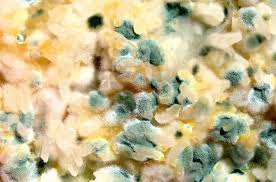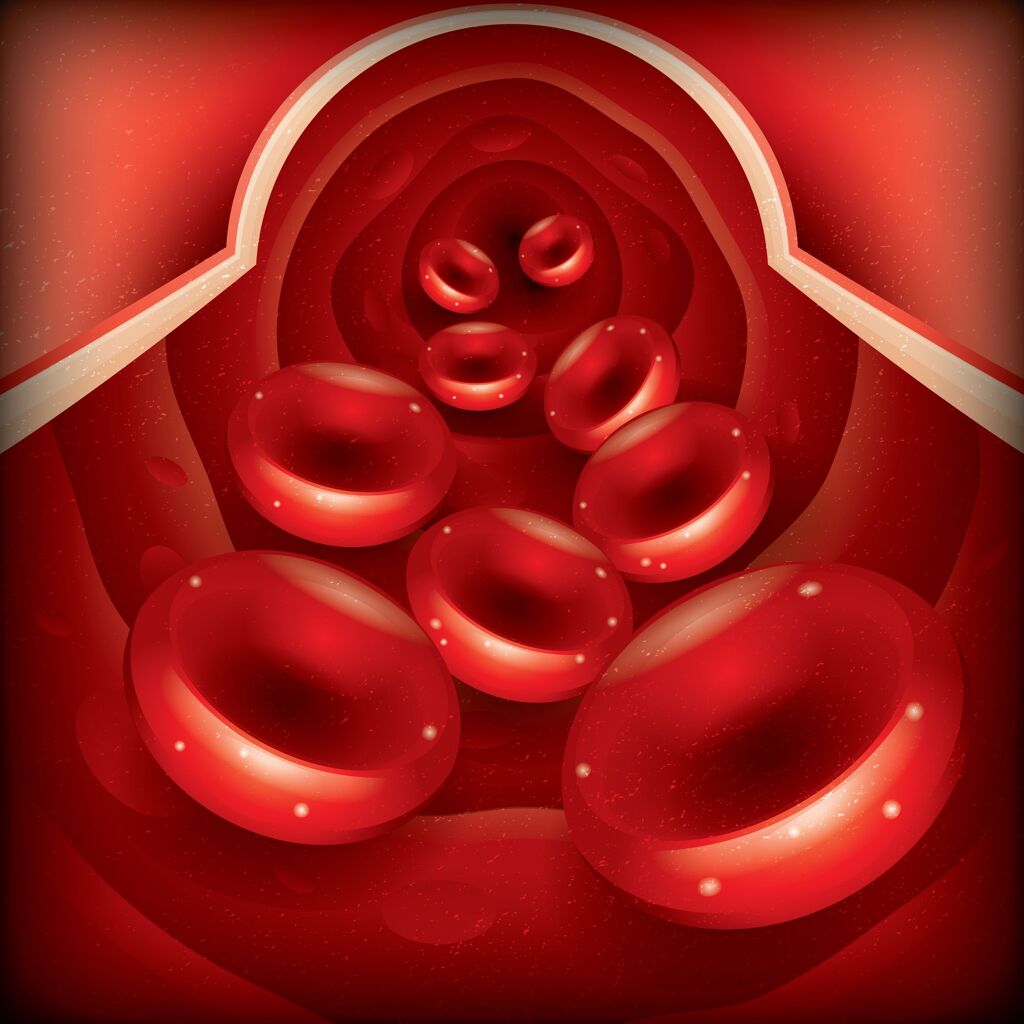When a Gluten Free Diet Isn’t Enough: Gluten Cross-Reactivity

Gluten Free: This week we’ll be talking about gluten cross-reactivity.
We’ll continue the leaky gut discussion and learn about foods that cause what’s known as “gluten cross-reactivity.” Foods that are cross-reactive with gluten do not contain the gluten protein alpha-gliadin, but they illicit a similar immune response in people who are sensitive to gluten. When these cross-reactive foods are consumed, IgG and/or IgA antibodies are released into the bloodstream in response to perceived antigens.
This is a silly comparison, but I think of gluten cross-reactivity like an Elvis impersonator. Imagine for a moment that your immune system is like a grouchy old person who doesn’t like Elvis’ loud music and hip shaking. Elvis is like gluten. He gets the immune system irritated and inflamed.
In this scenario, gluten cross-reactive foods are like Elvis impersonators. Even though they’re not the King, the immune system can’t tell the difference. Cross-reactive foods look like Elvis and and illicit the same immune response as if they were. And over time, the immune system becomes more upset by the presence of cross-reactive foods, the more it’s exposed to them.
Gluten cross-reactivity may be the missing link for some people with celiac disease (CD) and non-celiac gluten sensitivity (NCGS). CD and NCGS are both gluten-sensitivity disorders that primarily affect the duodenum of the small intestine. Keep reading to learn which foods are cross-reactive with gluten and how to test whether you or your clients may be sensitive to these cross-reactive substances.
Celiac Disease and the Small Intestine
The hallmark of CD is the destruction and flattening of the villous architecture of the small intestine. This structure consists of numerous finger-like projections of the microvilli which extend into the lumen of the small intestine to absorb nutrients from food. In CD, the microvilli become damaged and flatten.
Microvilli extend from the tips of larger finger-like projections known as villi, and together form the villous architecture, an impressive three-dimensional landscape with tremendous surface area. The “villi and microvilli together amplify the small intestinal surface area by 60–120 times” (1). This markedly increased surface area makes absorption of nutrients possible by increasing contact with chyme, or partially digested food in the lumen of the small intestine.
In CD the intestinal surface is flattened and surface area is greatly reduced. Consequently, CD patients demonstrate a reduced ability to absorb nutrients from food, as well as accompanying digestive distress like diarrhea.
To Read About Blog Topic, Scroll Down
Want To Work With Our Clinic?
Do you have a chronic or mystery illness that no one has been able to help you with? Are you simply wanting to re-connect with a healthier version of yourself? It’s Time To Finally Feel Better!
The small intestine normally processes chyme (partially digested food), sending primarily waste products and water on to the colon. But the impaired small intestine function characteristic of CD results in the small intestine sending undigested substances to the colon that irritate it. In response, the colon tries to rid itself of these irritants by purging them through diarrhea, potentially leading to dehydration and electrolyte imbalance in addition to malnutrition.
Is a gluten free diet enough?
Research is beginning to show that there may be more to the flattening of the villous architecture than simply the effects of gluten protein alpha-gliadin itself.
A large 2009 study of CD patients found that after six months on a gluten-free diet, only 8% of individuals demonstrated a complete normalization of microvilli in the the small intestine. Remarkably, 65% of these patients were in remission and asymptomatic (2)! The extremely low rate of villous regeneration has led researchers to question whether the standard gluten-free diet is sufficient to truly resolve CD.
These findings bring up a few questions:
- Why do some non-gluten foods trigger an immune response?
- Why do some CD and NCGS patients not always experience remission of symptoms on a gluten-free diet?
- Why do so many asymptomatic CD patients on a gluten-free diet continue to show villous damage?
- What else don’twe know about gluten and its effects on the small intestine?
At this point, science has identified three probable causes that may contribute to incomplete recovery from gluten related disorders like celiac disease and gluten sensitivity:
- Some foods contain proteins that are very similar in structure to gliadin and consequently trigger an immune response. This can be thought of as a case of “mistaken identity.” The immune system mistakes non-gliadin dietary proteins as gliadin and mistakenly mounts an immune response. This is especially likely in cases of leaky gut. This is the primary cause of the gluten cross-reactivity which we will discuss in more detail shortly.
- Leaky gut has allowed other proteins to enter the bloodstream prematurely. As discussed in a previous article, intestinal permeability (aka leaky gut) allows proteins to be absorbed into the bloodstream before they have been adequately broken down. These foreign proteins are regarded as foreign invaders by the immune system and trigger the formation of antibodies against those proteins. A leaky gut can allow many dietary proteins to enter the bloodstream, triggering an immune response. By this mechanism, any and all foods consumed can trigger the formation of antibodies and an immune response (3).
- Foods may be cross-contaminated with gluten proteins. Although foods may not contain gluten proteins themselves, they may be cross-contaminated. Many celiac patients have had the experience of being “glutened” at a restaurant by cross-contamination of trace amounts of gluten. Two other ways foods are cross-contaminated is when foods are processed in a facility that also processes gluten, or when foods are not securely packaged, as in bulk bins at the grocery store.
Although many questions do remain, newer research is illuminating more detail on these topics. For the purposes of this article we will primarily focus on number one, proteins that appear similar to gluten to the human immune system and can trigger a response. We’ll also talk some about number two, as leaky gut nearly always plays an unavoidable role in celiac disease and most auotimmunity in general.
Gluten Free and Gluten Cross-Reactivity
Continued consumption of foods that contain proteins which resemble the primary gluten protein alpha-gliadin appears to be a primary reason CD patients do not improve on a gluten-free diet. In this scenario, the immune system simply mistakes other dietary proteins for alpha-gliadin because they look alike. This is especially likely in cases of intestinal permeability, when incompletely digested proteins are constantly circulating in the bloodstream.
The following foods are cross-reactive with gluten:
- Cow’s milk and dairy products [whey and casein in particular]
- Milk chocolate
- Brewer’s and baker’s yeast
- Coffee
- Millet
- Corn
- Rice
- Potato
- Oats (3)
Transglutaminase and Molecular Mimicry
One other form of cross-reactivity is known as “molecular mimicry,” in which proteins in the body demonstrate cross-reactivity with alpha gliadin. Through a T helper cell type 1 response, the immune system mistakes proteins in human body tissues as antigens and mounts an immune response. This is one primary mechanism by which autoimmunity is believed to develop. It is not just gliadin that is implicated in molecular mimicry, however.
Transglutaminase enzymes also appear to be involved. Tissue transglutaminase (tTG) in particular is implicated in CD and has at least two mechanisms of action. tTg enhances the immunostimulatory effect of gluten as a deamidating enzyme, and tTG is also itself a target autoantigen in the immune response
tTG is believed to play a key role in the pathogenesis of CD. Gliadin peptides are rich in glutamine, which makes them an excellent substrate for tTG. The deamidated peptides created by the action of tTG have a high affinity for gene molecules that are expressed in CD (HLA-DQ2 and HLA-DQ8) and their action contributes to progression of the disease.(4).
What to do if you still have symptoms
If you’ve followed a gluten-free diet consistently for 3-4 months or more and are still struggling with symptoms like brain fog, joint aches, and intestinal upset, you may want to consider eliminating these cross-reactive foods for a period of time to see if your symptoms improve.
After following this diet for three months you can try reintroducing these foods one at a time, in normal elimination diet fashion. Reintroduce one food a time and watch carefully for reactions. Allow 3-4 days to watch for delayed reactions between foods. If you’ve done an elimination diet before you know that reactions can be delayed as much as 3 days.
Other options
Lab testing can identify which cross-reactive foods are an issue for a given individual. Different people vary in their immune response to specific foods and testing identifies which foods are promoting the strongest immune response. The Cyrex Array 4 Gluten-Associated Cross-Reactive Foods & Foods Sensitivity™ panel evaluates more than 25 commonly cross-reactive foods. If the prospect of eliminating even more foods from your diet seems overwhelming and you want to know which foods you react to specifically, this type of testing may be a good option.
Another benefit to this type of testing is that your functional medicine practitioner can monitor your progress with subsequent testing. After eliminating reactive foods for 3-4 months, circulating serum antibodies should decrease. Testing provides tangible proof of progress so that you can know you are on the right track.
Want help with your health? Book a free health evaluation call to see if you are a good fit for our clinic by clicking the button on the left below. If you are a clinician interested in advancing your training, please check out our online worldwide functional medicine training institute by clicking the button on the right below.
Book My Free Phone Health Evaluation Functional Medicine Certification for Clinicians References
- Helander, Herbert F., and Lars Fändriks. “Surface Area of the Digestive Tract – Revisited.” Scandinavian Journal of Gastroenterology 49.6 (2014): 681-89. Web.
- Lanzini, A., F. Lanzarotto, V. Villanacci, A. Mora, S. Bertolazzi, D. Turini, G. Carella, A. Malagoli, G. Ferrante, B. M. Cesana, and C. Ricci. “Complete Recovery of Intestinal Mucosa Occurs Very Rarely in Adult Coeliac Patients despite Adherence to Gluten-free Diet.” Alimentary Pharmacology & Therapeutics 29.12 (2009): 1299-308. Web.
- Vojdani, Aristo, and Igal Tarash. “Cross-Reaction between Gliadin and Different Food and Tissue Antigens.” Food and Nutrition Sciences 04.01 (2013): 20-32. Web.
- Sabatino, Antonio Di, Alessandro Vanoli, Paolo Giuffrida, Ombretta Luinetti, Enrico Solcia, and Gino Roberto Corazza. “The Function of Tissue Transglutaminase in Celiac Disease.” Autoimmunity Reviews 11.10 (2012): 746-53. Web.
Are You Suffering From A Chronic Illness?
Does your current health situation look like this…
- Do you feel that you have tried many things and either nothing works, or the treatment does not hold?
- Have you been told that there is nothing that can be done to reverse your illness and you just need to manage symptoms?
- Does your illness impact your work, your family, your happiness and your social life?
We specialize in finding answers and solutions for complicated chronic illness when people feel like they have tried everything. If this sounds like you, book a free call with us to see if we are the right fit for your health goals.
Dr. Miles has spoken for the following organizations:


















ARRRGH! Now there is truly nothing that I can eat with normal people. My poor Dad, loves to cook and is very sensitive to my needs,but the list of things I cannot eat grows. I recently had a pretty intense reaction to tomato soup, where I did not sleep a wink after eating it…. If I add potatoes, rice and corn to that list, it starts to encompass everything that normal people eat… back to meat and vegetables!
This is an amazing article! So much helpful information here and I have two clients that may be currently impacted by this cross reactivity! I am very grateful to have this in my inbox this morning!
It was so great to meet you both last weekend at the conference!!!!
Christine